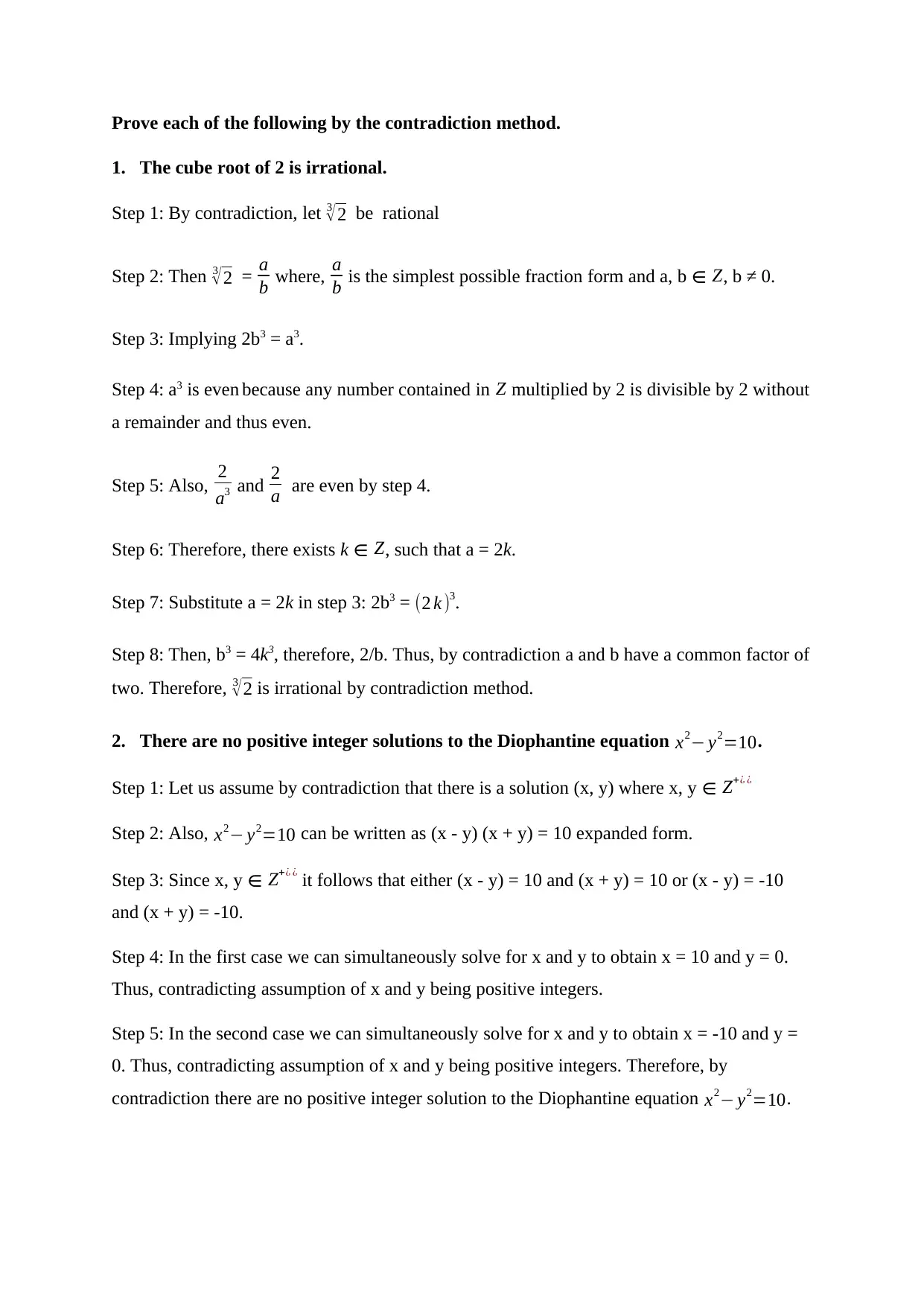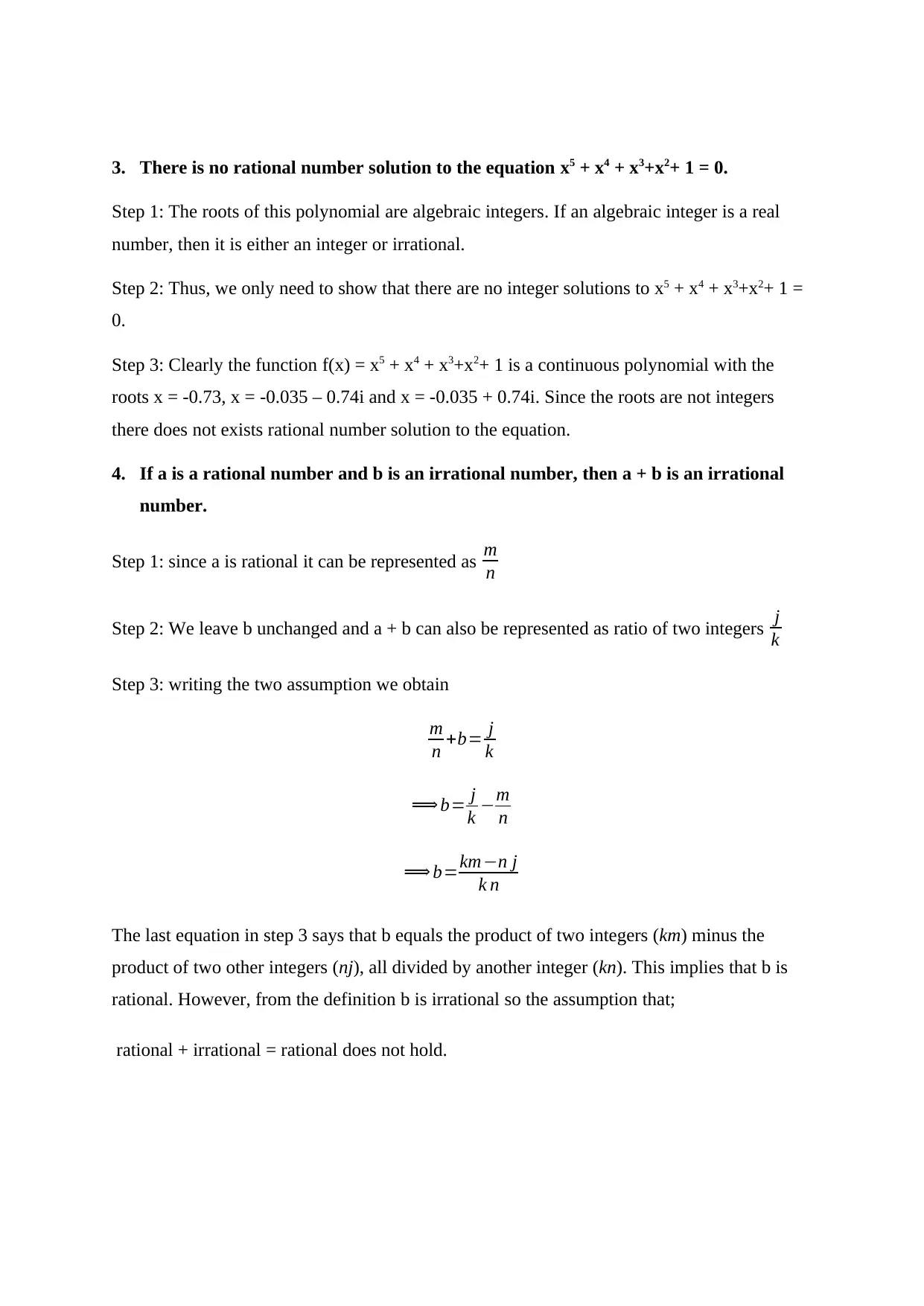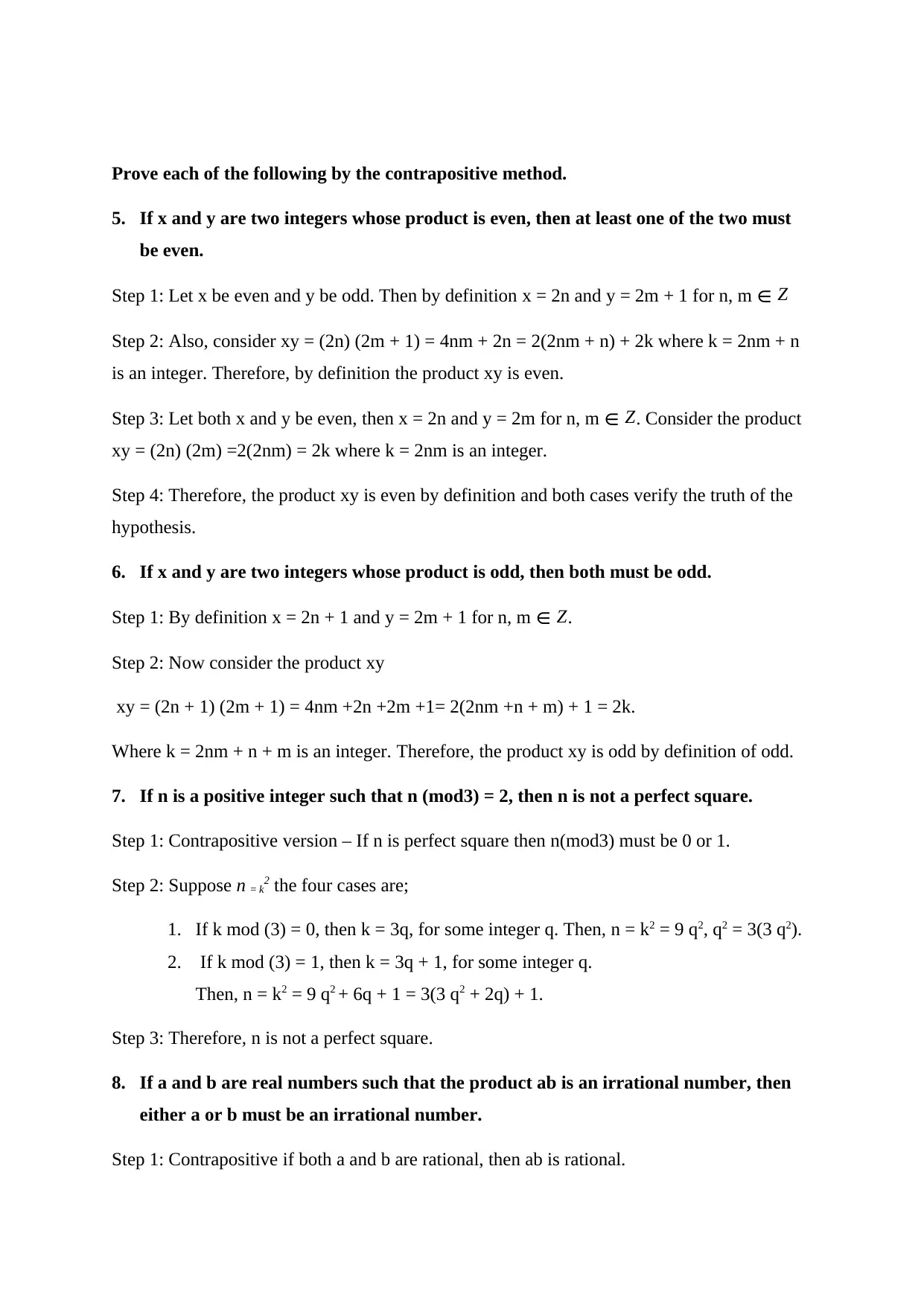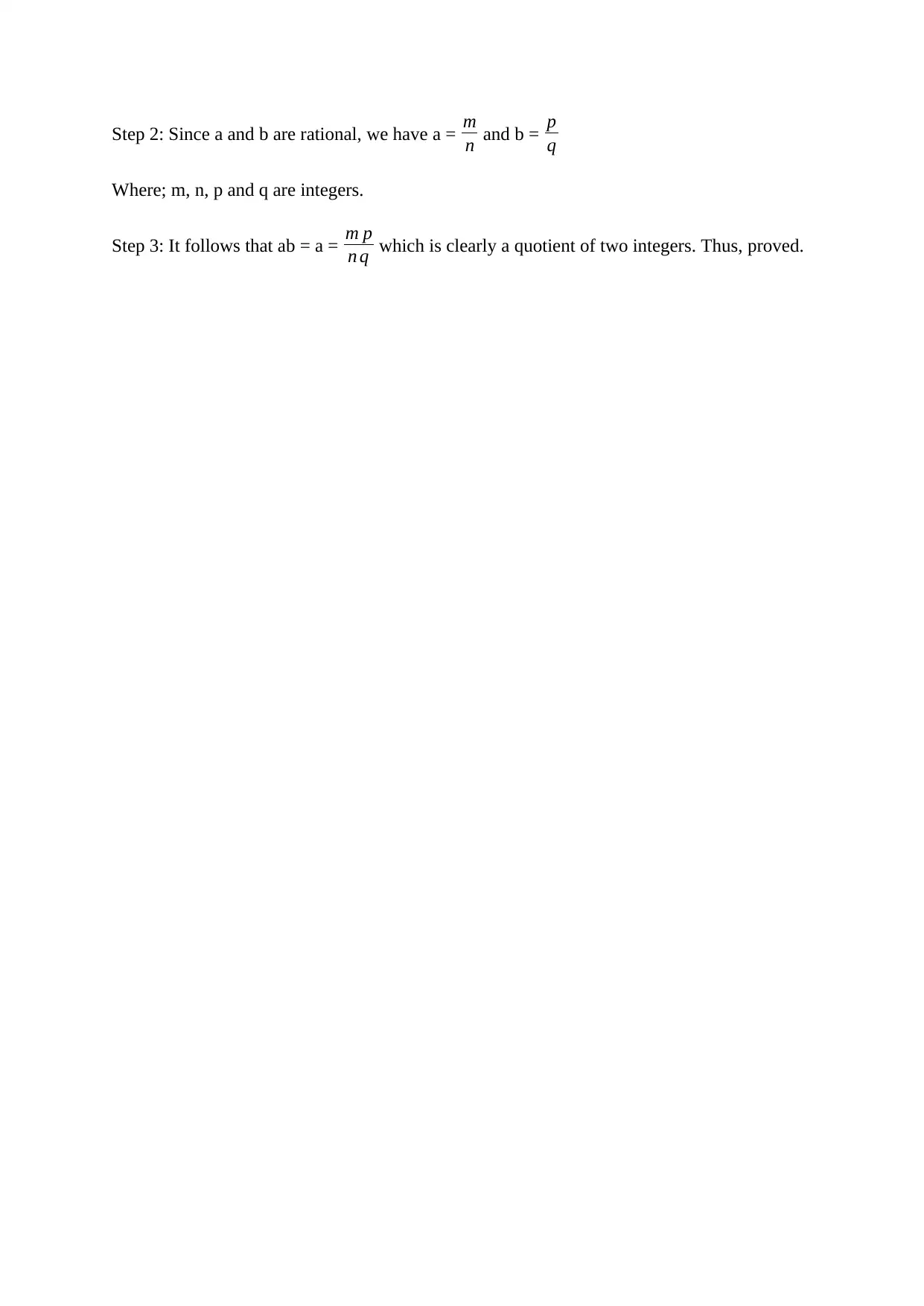Contradiction and Contrapositive Proofs in Number Theory Analysis
VerifiedAdded on 2023/04/20
|4
|1232
|72
Homework Assignment
AI Summary
This assignment demonstrates proofs using the contradiction and contrapositive methods. It includes proving the irrationality of the cube root of 2, showing that the Diophantine equation x^2 - y^2 = 10 has no positive integer solutions, demonstrating the absence of rational number solutions for the equation x^5 + x^4 + x^3 + x^2 + 1 = 0, and proving that the sum of a rational and an irrational number is irrational. Additionally, it covers proofs by contrapositive, such as showing that if the product of two integers is even, at least one must be even, and if the product is odd, both must be odd. It also demonstrates that if n is a positive integer such that n (mod 3) = 2, then n is not a perfect square, and if the product of two real numbers is irrational, then either a or b must be irrational. Desklib offers a range of solved assignments and study tools for students.
1 out of 4











![[object Object]](/_next/static/media/star-bottom.7253800d.svg)